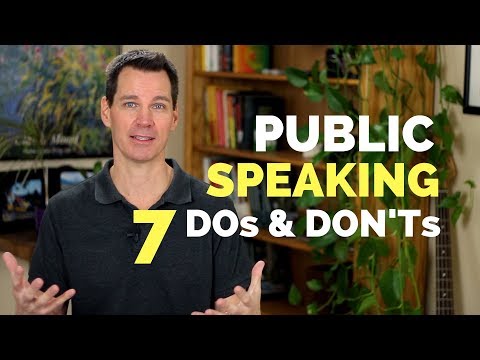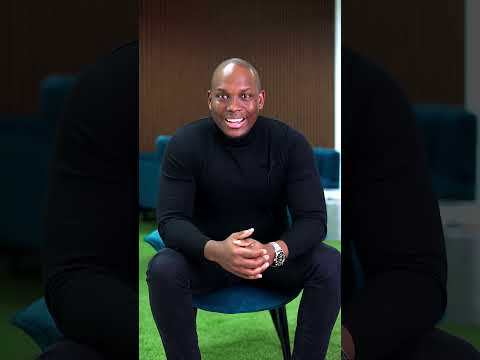Public speaking training has transformed from a niche skill into a critical asset in today’s fast-paced, communication-focused age. With social media and virtual events dominating the landscape, the ability to engage an audience effectively has never been so vital. Whether you’re presenting at a large conference, speaking to a small corporate team, or addressing an online audience, the skills gained from dedicated public speaking training can set you apart from others. This article explores the foundational elements of successful public speaking, including understanding your audience, storytelling techniques, and the essential role of body language.

The Art of Effective Public Speaking Training

1. Understanding Your Audience: Key to Public Speaking Training
In public speaking training, knowing your audience can change everything. When you tailor your message to resonate with your listeners, engagement levels soar. According to research, speakers who invest time studying their audience’s demographics—like age, interests, and cultural background—achieve far greater impact. Consider Simon Sinek, known for his engaging talks. He often asks audiences not just what they do but why they do it, crafting a connection that resonates deeply with passionate young entrepreneurs.
Here’s a simple takeaway: listening is just as important as speaking. By tuning into your audience’s needs, you can transform a dry presentation into a lively discussion. Remember, the goal isn’t just to speak; it’s to connect.

2. The Power of Storytelling in Public Speaking Training
Everyone loves a good story—and for a good reason. Storytelling binds people together and captivates audiences. Think about Barack Obama. His speeches often intertwine personal anecdotes with larger themes, making even the most complex political discussions relatable. Enriching your public speaking training with storytelling techniques can help forge that same connection.
A compelling narrative might include a mystery, a heartfelt struggle, or a small victory that echoes your main message. Such stories allow listeners to see themselves in your words, fostering a memorable experience that sticks long after the event. So why not sprinkle some stories into your presentations?
3. Mastering Body Language: An Essential Component of Public Speaking Training
What you don’t say can be just as crucial as your words. Body language plays a massive role in public speaking training, with research showing that about 55% of communication is nonverbal. A speaker like Brené Brown effectively employs eye contact, open gestures, and varied facial expressions to emphasize her points on vulnerability and courage.
Here are some key body language tips:
Mastering body language can truly boost your speaking game. It helps you convey confidence and engage your audience on a deeper level.
4. Engaging With Technology: Enhancements in Public Speaking Training
In this tech-driven era, integrating technology into public speaking isn’t just an option—it’s a necessity. Tools like interactive presentations (think Prezi or Canva) and audience engagement apps like Slido can elevate the experience for everyone involved. For example, celebrity chef Jamie Oliver often uses these digital platforms in his cooking demos, inviting audience participation that makes his presentations lively and fresh.
So, whether you’re using polls, quizzes, or visually striking slides, embracing technology can amplify your impact while keeping your audience engaged. In public speaking training, becoming tech-savvy is as critical as honing your delivery.
5. Practice Makes Perfect: The Role of Rehearsal in Public Speaking Training
“The more you practice, the better you get.” That’s more than just an idiom; it’s the essence of public speaking training. The ‘10,000-hour rule’—a concept popularized by Malcolm Gladwell—stresses the importance of diligence and repetition in achieving mastery. Just as athletes like Olympic gymnast Simone Biles practice tirelessly for perfection, speakers must do the same.
By rehearsing repeatedly, you refine your delivery, manage anxiety, and create presentations that resonate. So, grab a mirror or enlist a friend, practice your speech, and see the transformation for yourself!
6. Receiving and Utilizing Feedback: A Crucial Element of Public Speaking Training
Feedback is gold in the realm of public speaking training. Whether you receive insights from peers, coaches, or audience members, constructive criticism is invaluable for pinpointing strengths and weaknesses. TED Talk presenter Amy Cuddy often shares how she improved her presentations by incorporating feedback from her practice sessions.
Embrace the power of feedback. Use it as a stepping stone to refine your skills. Even well-known speakers recognize that growth comes from being receptive to others’ opinions while remaining true to their unique voice.
7. Developing Your Unique Style: Personalization in Public Speaking Training
Your style is your brand. Public speaking training should emphasize developing a personal voice that resonates authentically with your audience. Take Oprah Winfrey, for instance—her storytelling and heartfelt delivery create a connection that feels genuine and vibrant.
To cultivate your style:
– Reflect on your experiences and values.
– Experiment with different formats and tones until you find your groove.
– Let your personality shine through in every presentation.
Developing your unique style isn’t just rewarding; it makes your messages more powerful, leading to deeper connections with your audiences.

Wrapping Up: The Future of Public Speaking Training
As we step into 2024, public speaking training continues to evolve. The demand for effective communication skills is only set to heighten. By mastering audience analysis, storytelling, body language, tech integration, rehearsal techniques, feedback utilization, and personal style development, speakers can captivate audiences in ways previously unimagined.
Practicing these principles consistently not only enhances your public speaking capabilities but also builds a richer connection in an age that thrives on impactful communication. If you’re looking for someone to elevate your next corporate event, you can Hire a keynote speaker who exemplifies these principles.
So, what are you waiting for? Dive into public speaking training and discover the secrets that lie within! Whether you’re aiming for business engagements or casual talks, the skills you develop will serve you well. Let’s make those presentations unforgettable together!
Finally, for those planning to organize a speaker event or engage in business keynote Events, remember the impact a well-trained speaker can have on your audience! Together, we can create engaging experiences that resonate long after the curtain goes down.

Public Speaking Training: Secrets to Captivating Audiences
The Art of Connection
Public speaking training isn’t just about the words you use; it’s about making a real connection with your audience. Did you know that some of the most captivating speakers include artists across different fields? For instance, H.e.r . has wowed crowds not only with her music but with her ability to engage when she speaks, turning each performance into a dialogue. Similarly, mastering effective public speaking skills can elevate anyone’s ability to connect personally with listeners, making your message land with impact.
The Power of Presence
Now, let’s consider how presence matters in public speaking training. Some of the most memorable voices in pop culture have a knack for holding attention. Take Phoebe Cates, for example. While she’s best known for her acting, her charisma in interviews highlights how strong presence can captivate an audience. It’s all about delivering your message with passion and confidence—qualities that effective practice can hone. By engaging with your audience’s emotions and addressing their interests, you can create a memorable experience that resonates long after you’ve spoken.
Overcoming Challenges
Of course, mastering public speaking isn’t without its hurdles. Like some recent controversies surrounding figures like Andrew Tate, who’s made headlines for less-than-flattering subjects, a speaker’s background can affect how their message is received. Understanding the importance of context in your narrative can make or break your impact. Public speaking training helps you navigate these challenges, empowering you to convey your ideas without the baggage.
So, why not make your audience feel at home? For instance, if you’re presenting about agriculture, referencing something relatable like a Stardew greenhouse can draw listeners in, sparking their curiosity. Tailoring your anecdotes and visuals to common interests creates a shared experience that makes your message stick. Whether you’re a newcomer to public speaking or looking to polish your skills, tapping into these insights is key to captivating anyone who’s lucky enough to tune in.

How do I train myself to speak in public?
To train yourself for public speaking, start by practicing in front of a mirror or recording yourself. This helps you see your body language and hear your tone. Get comfortable with your material and try to speak it out loud multiple times. Joining a local speaking group can also boost your confidence as you share the stage with others.
What are the 7 P’s of public speaking?
The 7 P’s of public speaking include pronunciation, pace, pause, punch, power, passion, and posture. Focus on these elements to make your speech sound better and feel more engaging. They help you connect with your audience and deliver an impactful message.
What’s the best public speaking course?
The best public speaking course depends on your personal needs and learning style. Look for courses that offer practical experience, feedback from peers, or coaching from experienced speakers. Check reviews and consider courses that cater to different skill levels.
How do I develop my public speaking skills?
To develop your public speaking skills, work on your body language, maintain eye contact, and engage your audience. Practice makes a significant difference, so seize every chance to speak in front of others, whether it’s in small groups or larger gatherings.
Why am I so shy to talk in public?
Feeling shy when talking in public is pretty common. Many people struggle with nerves, but it’s often rooted in fear of judgment. The more you practice and familiarize yourself with public speaking, the more confident you’ll become over time.
What are the 5 Cs of public speaking?
The 5 Cs of public speaking are clarity, confidence, content, charisma, and connection. Focusing on these aspects can help make your presentation more effective and engaging, allowing you to leave a lasting impression on your audience.
What are the 3 C’s of public speaking?
The 3 C’s of public speaking are content, clarity, and confidence. Ensuring your message is strong, easy to understand, and delivered with assurance will elevate your speaking game and keep your audience interested.
What are the golden rules of public speaking?
Golden rules of public speaking include knowing your audience, practicing thoroughly, speaking clearly, and keeping it interactive. Respect your audience’s time and attention by being organized and engaging.
What are the 3 S’s of public speaking?
The 3 S’s of public speaking refer to smile, slow down, and stay on topic. Smiling helps create a connection, slowing down gives listeners time to absorb your message, and staying on topic keeps your talk focused and relevant.
Which course is best for public speaking?
Choosing the best course for public speaking varies, but look for options that provide hands-on practice and constructive feedback. Online platforms and local workshops can offer great learning opportunities, so find what fits your schedule and style.
How can I train my voice for public speaking?
To train your voice for public speaking, practice vocal exercises, read aloud, and try different tones and pitches. Record yourself to hear how you sound, and focus on breathing techniques to improve projection and clarity.
How to get over fear of public speaking?
Overcoming the fear of public speaking often starts with preparation. Knowing your material inside and out helps a ton. Also, practice relaxation techniques, like deep breathing, to ease your nerves right before you speak.
Do and don’ts of public speaking?
Some do’s for public speaking include engaging with your audience, being prepared, and maintaining eye contact. Don’ts include avoiding filler words, going off-topic, or reading directly from notes without interaction. Keep it natural!
What makes an ineffective speaker?
Ineffective speakers often lack clarity, use monotonous tones, or fail to engage their audience. If a speaker doesn’t read the room or share relatable stories, they can lose their audience’s attention pretty quickly.
How do you start public speaking for beginners?
Beginners in public speaking should start small, perhaps by joining clubs like Toastmasters or speaking at community events. Familiarize yourself with your topic and practice, as each experience will build your confidence.
Can you practice public speaking by yourself?
Yes, you can definitely practice public speaking by yourself. Try rehearsing in front of a mirror, recording yourself, or even talking to a pet. These methods help refine your delivery and boost your confidence without the pressure of an audience.
How can I improve myself in public speaking?
To improve in public speaking, seek feedback after your presentations, watch skilled speakers, and continuously practice. Set specific goals for each speaking opportunity and focus on areas where you want to grow.
How can I train my voice for public speaking?
You can train your voice for public speaking by doing exercises to strengthen your vocal cords, working on your breath control, and practicing projection. Regularly speaking aloud will also help make your voice clearer and more powerful.
How do I start a public speaking training?
Starting a public speaking training involves finding a course that suits you, whether online or in person. Begin by practicing in comfortable settings, gradually increasing the size of your audience as you gain confidence in your abilities.


















